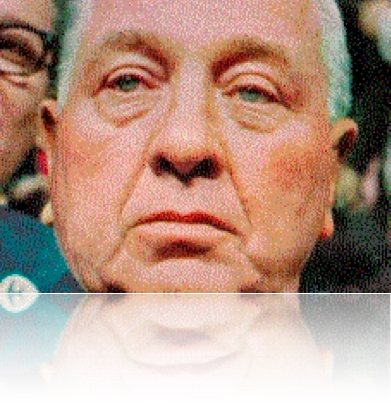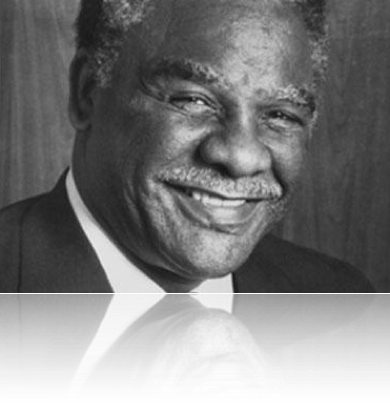
A Short History
Veteran journalist Mike Royko once described the stereotypical Chicago style as “belly to belly, scowl to scowl, and may the toughest or loudest man win,” and Chicago has always been as associated with its corrupt politicians as with its deep dish pizza and gangster history. But then politics in Chicago wasn’t always so colorful. For the first four or so decades of the city’s history, a wealthy commercial elite dominated municipal politics. Committed to the infrastructural development necessary for the continued growth of the city, Chicago’s political leaders maintained an appearance of magnanimous consensus.
Ethnic and cultural conflict, however, intermittently fractured this vision of a politically harmonious city. Reacting to the cultural insult they saw in new restrictions on saloons, Chicago’s German and Irish communities erupted in the Lager Beer Riot of 1855. The largely immigrant working class unseated one-time mayor (1871-1873) and Chicago Tribune publisher Joseph Medill when he attempted to enforce the Sunday closing law. Largely though not exclusively associated with the Democratic Party, the working class frequently made its voice heard in politically-inflected labor disputes, including the Great Railroad Strike of 1877 and the Haymarket Affair of 1886.
The electoral power of Chicago’s working people brought a series of colorful and charismatic leaders to the mayor’s office. Living in a chaotic industrial city that, like the rest of America, lacked a formal welfare program, these workers often turned to ward-level politicians for the provision of jobs and services. A political culture of patronage—in which politicians traded concrete goods for votes—dominated much of the city and large factions of both major political parties. Famously, John Joseph “Bathhouse” Coughlin and Michael “Hinky Dink” Kenna—Aldermen of turn-of-the-century Chicago’s South Side vice district, the Levee—held election day parties in which they rewarded supporters with cash, booze and prostitutes. At the city-wide level, however, professional politicians built their political success more on personal charm (and sometimes outlandish antics) than on the organizational strength of a political machine.
All that would change with the 1931 election of Bohemian-born Anton Cermak to the mayor’s office. Cermak built on the interethnic anti-Prohibition movement to unite Chicago’s factious communities within the Cook County Democratic Party. The resulting informal centralization of political patronage and electoral nominating power—the famously powerful Democratic political machine—dominated Chicago politics for decades.
Following Cermak’s 1933 death by an assassin’s bullet (likely intended for President-elect Franklin Roosevelt), Cook County Democratic Chairman Pat Nash inherited the still-young machine and brought Edward Kelly to the mayor’s office. Kelly capitalized on New Deal federal funds, graft from organized crime and the newfound electoral support of Chicago’s growing black population to keep Chicago’s machine well-oiled throughout the Great Depression and World War Two. But Kelly ultimately fell victim to the organization he had nourished. In 1947, the Cook County Democratic Committee refused to re-nominate him for office. Aside from the open toleration of corruption and organized crime that earned him the ire of good government voters, party insiders were incensed over Kelly’s outspoken support for racially integrated housing and schools.
After Kelly, the party grudgingly backed a political outsider and businessman, Martin Kennelley, for two mayoral terms between 1947 and 1955. Meanwhile, Richard J. Daley, a South Sider and lifelong party loyalist, consolidated his control over the machine, ascending to the position of Cook County Democratic Party Chairman in 1953 and succeeded Kennelley to the mayor’s office in 1955. Holding both positions until his death in 1976, Daley gained a national reputation for single-handedly dominating Chicago politics. Nicknamed “Dick the Builder,” he oversaw ambitious civic construction projects, from the construction of the nation’s largest (segregated) housing project to the expansion of the city’s highways.
Still, as much as the Daley years represented the apex of the machine’s political power, the base of that power began to erode. The court-ordered and court-enforced Shakman Decrees, promulgated in the 1970s and 1980s, prohibited the politically-motivated hiring and firing of city and county employees, thereby limiting the patronage powers wielded by political officials. Far more decisively, the city’s hitherto reliably democratic black community was gaining political strength with its growth—even as it increasingly bucked the secondary political status assigned to it by the machine.
Between 1942 and his death in 1970, congressman William Dawson managed a black “submachine” on the South Side that remained loyal to the Democratic Party. However, by the mid-1960s, shrinking voter turnout in black wards signaled rising disaffection in the black community. Saul Alinksy’s Industrial Area Foundation, for instance, facilitated the organization of the Temporary Woodlawn Organization (now known as The Woodlawn Organization, TWO) to challenge machine governance at the grassroots in one South Side neighborhood. Black congressman Ralph Metcalfe’s public break with the party in 1972 and the defeat that year of machine-backed State’s Attorney Edward Hanrahan (identified with the police killing of Black Panther Party leader Fred Hampton three years earlier) marked the beginning of a revolution among black voters.
That revolt eventually culminated in the 1983 election of black South Side congressman and long-time Hyde Parker Harold Washington to the mayor’s office. Battling his way first through a bruising three-way primary with incumbent Jane Bryne and the former mayor’s son, Richard M. Daley, and then through a racially-charged general election against Bernie Epton, Washington’s victory was as bittersweet as it was hard fought. Elected by the unprecedented mobilization of black voters allied with liberal white reformers, Washington was initially unable to gain the cooperation of the old party faithful that was necessary to run the city. An all-white faction of alderman in the City Council opposed Washington’s every move and openly flouted his authority, sometimes refusing even to refer to him by his rightful title, “Mayor.” Only a court-ordered redistricting of city wards and special elections were enough to end the so-called “Council Wars” in 1986.
Further reading:
Edward C. Banfield, Political Influence (Glencoe, IL: Free Press, 1961)
Roger Biles, Richard J. Daley: Politics, Race, and the Governing of Chicago (Dekalb, IL: Northern Illinois Press, 1995)
Timuel D. Black Jr., Bridges of Memory: Chicago’s First Wave of Black Migration (Evanston, IL: Northwestern University Press, 2003)
--------, Bridges of Memory: Chicago’s Second Generation of Black Migration (Evanston, IL: Northwestern University Press, 2007)
Adam Cohen and Elizabeth Taylor, American Pharaoh: Mayor Richard J. Daley, His Battle For Chicago and the Nation (Boston: Little, Brown, 2000)
Encyclopedia of Chicago, James Grossman, Ann Durkin Keating and Janice L. Reiff, eds. (Chicago: University of Chicago Press, 2004)
William J. Grimshaw, Bitter Fruit: Black Politics and the Chicago Machine, 1931-1991 (Chicago: University of Chicago Press, 1992)
Milton L. Rakove, Don’t Make No Waves—Don’t Back No Losers: An Insider’s Analysis of the Daley Machine (Bloomington, IN: Indiana University Press, 1975)
Gary Rivlin, Fire on Prairie: Chicago’s Harold Washington and the Politics of Race (New York: H. Holt, 1992)
Mike Royko, Boss: Richard J. Daley of Chicago (New York: Dutton, 1971)
Politics

Learn More


uchicago®  ©2007 The University of Chicago®
©2007 The University of Chicago®  5801 South Ellis Ave., Chicago, IL 60637
5801 South Ellis Ave., Chicago, IL 60637  773-702-1234
773-702-1234
 ©2007 The University of Chicago®
©2007 The University of Chicago®  5801 South Ellis Ave., Chicago, IL 60637
5801 South Ellis Ave., Chicago, IL 60637  773-702-1234
773-702-1234 

